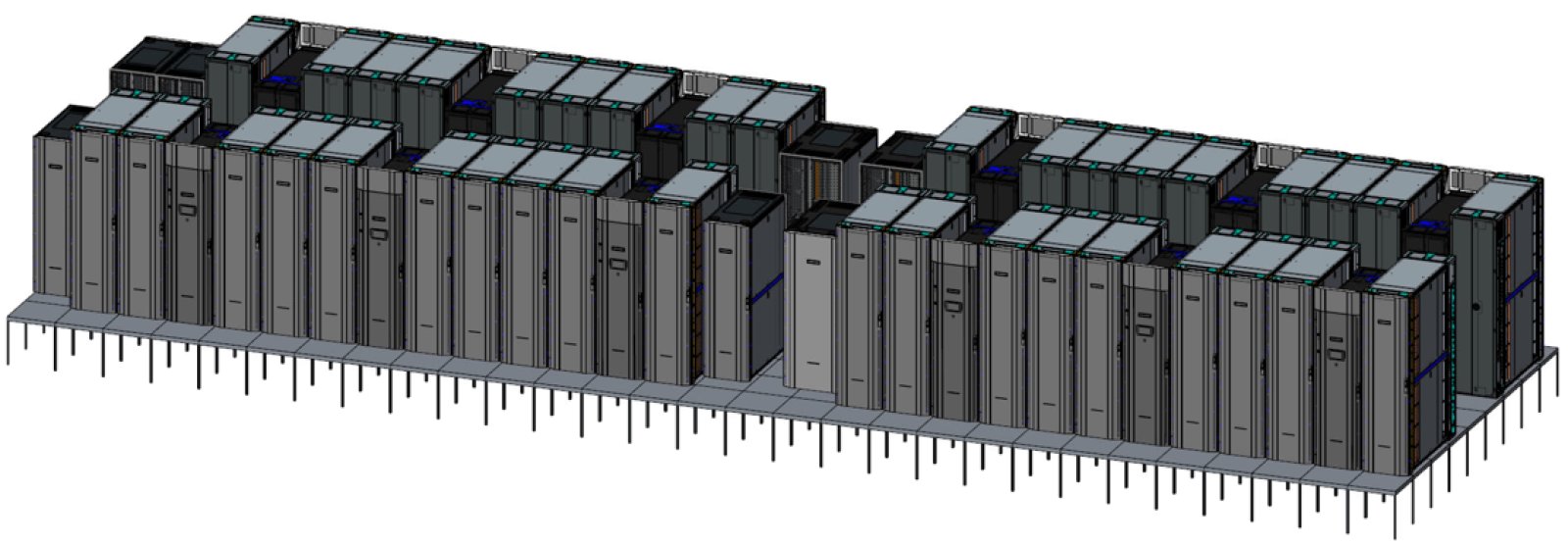ARM will power our Windows PCs and Macs in the future: New Astra USDOE Supercomputer demonstrates

In computing, as in most aspects of technology, size does not equates performance: efficiency however gets a system as close as it gets to an ideal of performance that works for a given range of tasks.
A perfect example is the Department of Energy’s newest supercomputer, Summit. Summit’s hardware infrastructure spans to the size of two tennis courts, and it’s comprised of 9,000 22-Core IBM Power9 CPUs, as well as 27,000 NVIDIA Tesla V100 GPUs. The computing power of which Summit is capable, allows it take one second to solve a problem that would take an average home PC a whole 30 years to complete.
While this comparison may seem impressive, Summit’s architecture is, as baffling as it sounds, not the most efficient, when it comes to speed. In fact, it could be much faster.
Modern CPUs based on the traditional x86 architecture, which is basically every desktop-class CPU in existence, are, in spite of their dye size, and blazing fast internal processing, affected by a common flow, which is the method they use to access memory and move data around a system and between multiple processors.
Without built-in memory within the processor itself, memory must be summoned from an external source, such as RAM or the hard drive, for numerous functions, and the energy consumption needed to move data around a system, as VP of HPE’s Advanced Technologies Mike Vildibill put it, “...is an order of magnitude greater than the power needed to compute the data.”.
In layman terms, the way desktop CPUs work today is not unlike running an engine at twice the speed, with half the gas required to get to your destination.
This is precisely why ARM processors are becoming so popular, and the reason for HPE and the US Department of Energy to build Astra, an experimental ARM-based supercomputer which will be used by the Sandia National Laboratory, to crunch data towards a greater understanding of nuclear research.
Astra is the first ARM-based supercomputer ever created, and it’s powered by 145,000 cores, through 2,592 dual processor servers, using 28-Core Cavium ThunderX2 ARM processors with eight memory channels, designed to deliver 2.3 Petaflops of performance, placing Astra in the list of the top 100 fastest supercomputers on Earth.
As mentioned earlier, Astra’s processors have a considerable advantage over x86 processors, because they have direct access to a large pool of memory, whereas x86 processors must “play an inefficient game of Mother May I”, in Vildibill’s own words. Also according to Vildibill, 90 percent of the workload of today’s computers is devoted to transferring data rather than processing it.
Anybody who’s ever worked in a production environment will more than related to this piece of information, just by thinking of how much time is usually dedicated to transfer large files from one hard drive to another, or from a network, versus the time it is spent on working on the actual file.
Solid State memory, such as flash drives, and SSDs, have become very popular, very quickly, because it represents a need to improve upon a generally accepted inefficiency of modern computing, for which there is no way around, except for overhauling the entire architecture of modern CPUs to a more efficient design that focuses on direct access to memory, rather than the creation of faster superconductor materials, on the base of which Moore’s principle exists.
By this token, it seems plausible that the future of computing is shaping up around alternative architectures, other than x86, a technology based on a design that dates back at least 50 years.
Apple and Microsoft are already moving forward with future designs of their own. On Apple’s side, the Cupertino tech giant is officially working on eventually powering Apple Mac computers with ARM CPUs of its own design, which means the phasing out of a partnership with Intel that has lasted decades.
Microsoft has also begun to pour resources into the development of desktop-class ARM-based processors, in partnership with Qualcomm, as they work on prototypes based on Snapdragon 820, a processor that Microsoft is hoping will break the 64-bit computing barrier, and bring a whole new lavel of performance and power efficiency to future Surface devices.